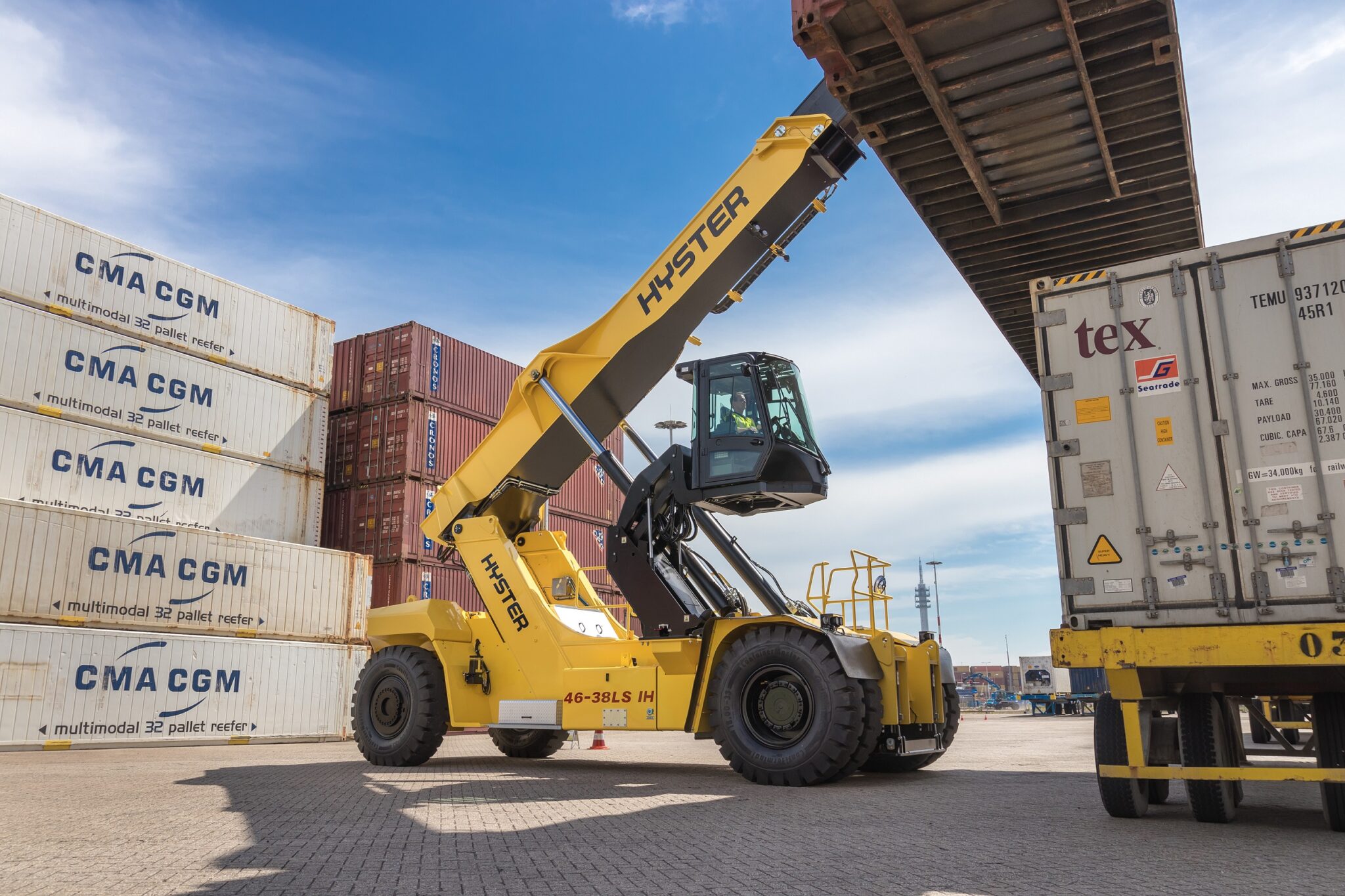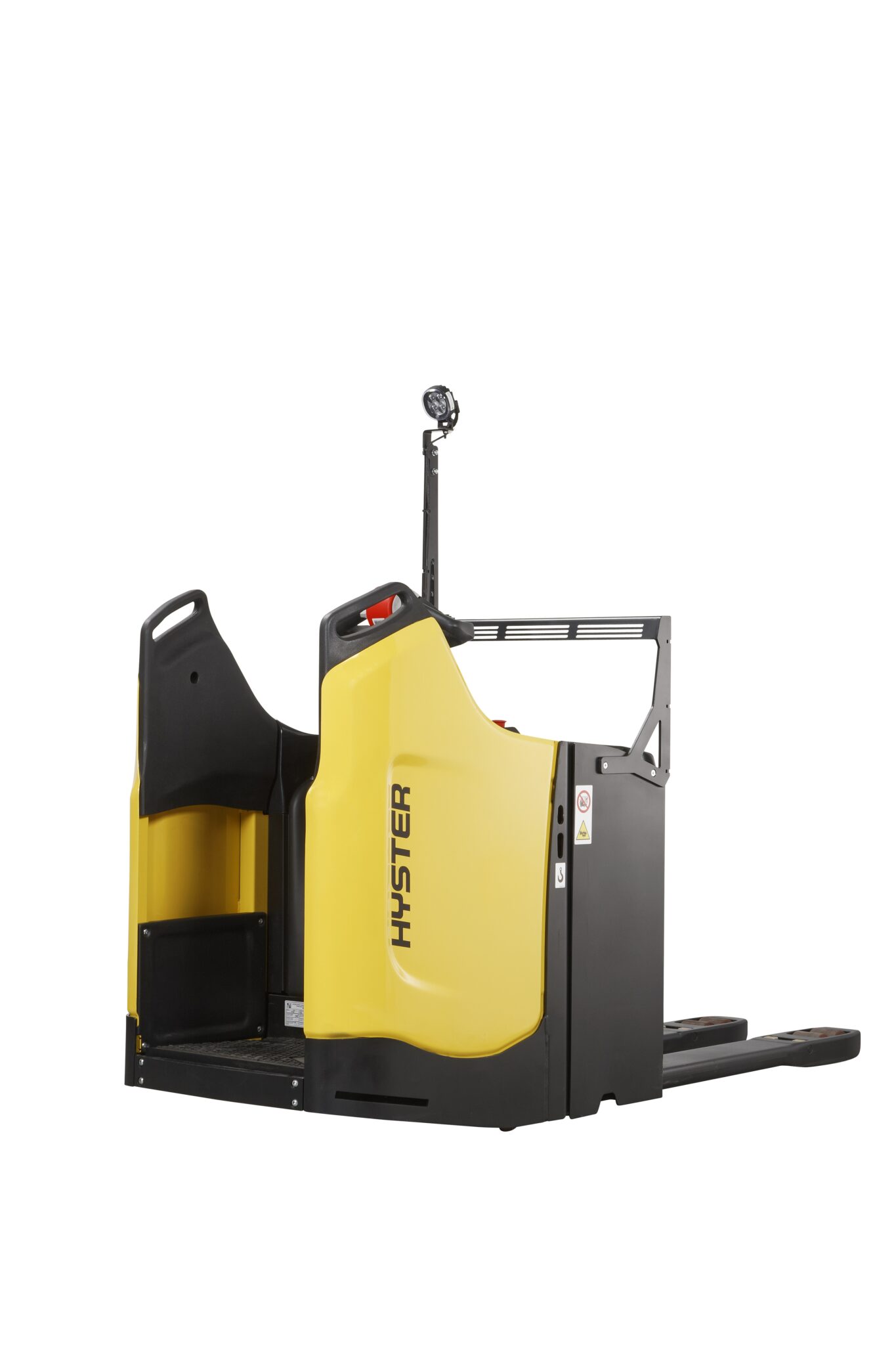Phil Ireland, Programme Leader 20/20 Platform at Hyster Europe, discusses the latest advances in lithium-ion power for Hyster lift trucks, and why common misconceptions could leave businesses missing out on the optimal solution.
In the past electric forklifts may have had a reputation for not being as ‘tough’ as their Internal Combustion Engine (ICE) counterparts. Though electric trucks thrive when matched with the right application, across the industry they can be typically seen to deliver 70% or less productivity compared to an equivalent ICE forklift. Until now.
New developments in lithium-ion
In 2020, Hyster launched the J7.0-9.0XNL series, with fully integrated lithium-ion batteries. These zero-emissions electric lift trucks with 7-9 tonnes of lift capacity offer comparable performance to an ICE truck, alongside rapid opportunity charging, due to some key advances in technology and truck design. For the first time, you can take a lithium-ion forklift, and “drive it like a diesel”.
A common objection to electric lift trucks is the run time. It is a fact that batteries can only store so much energy, so previously operations would need to factor in the time, and infrastructure, for re-charging, making an ICE truck a simpler proposition. However, the capability for opportunity charging with a lithium-ion battery changes that.
Operations with two or three shift operations can easily top up the charge, preventing the need for battery exchange and a separate charging room. The battery is also maintenance free with no watering or equalising, unlike a lead-acid battery. A single shift, seven-day-a-week operation using an electric forklift with a lead acid battery would, by contrast, need to equalise every six cycles for 16 hours.
What’s more, the lithium-ion battery permits high levels of regenerative braking current to be absorbed, extending run time and improving efficiency. This mode of operation is only possible on an electric lift truck and delivers the added benefit of less wear and tear on the brakes, in turn reducing maintenance costs.
The secret’s in the voltage
A key differentiator with the new Hyster J7.0-9.0XNL series is the voltage. The 350V technology makes high power charging and intensive performance possible. There is no loss in performance from frequent charging or capacity loss at heavy usage.
The higher voltage system makes it possible to charge at up to 50kW, speeding up the process. From empty, the lithium-ion battery can achieve 100% charge in less than 80 minutes. Importantly, high-power charging also allows for a quick boost – for certain applications, one minute of charging may create up to four minutes of drivetime. And the high voltage has other benefits too.
Lower voltage batteries result in a higher current for the same level of power and can overheat in intensive work cycles. Conversely, the 350V battery supports high productivity (in tonnes per hour moved) and applications with both intense peaks and continuous heavy-duty usage.
In this case, an electric truck is absolutely tough enough. The Hyster J7.0-9.0XNL series also features tough drivetrains, simple engineering, longer service intervals, and components built to last the lifetime of the truck, minimising truck maintenance needs.
There is also another important myth to address – that “electric trucks overheat all the time”. The Hyster J7.0-9.0XNL lift trucks are not only designed with a high voltage (and therefore low current) system that greatly reduces heat development, but also incorporates specially designed water-cooled motors and drive controllers to prevent this, while increasing the overall efficiency of the truck. Battery monitoring systems are also included to keep a close eye on under and overcharging.
A green option for yellow trucks
The Hyster J7.0-9.0XNL series of electric lift trucks produce zero emissions. This is a clear benefit to those organisations aiming to improve environmental credentials. Globally there is a move towards stricter legislation, and even total bans, on vehicles with IC engines. Organisations are therefore increasingly making the move to electric vehicles.
The ability to run and charge trucks internally without additional ventilation also provides a pollution-free alternative well suited to indoor/outdoor applications. The high controllability of electric trucks makes them an ideal option for working in confined areas, such as narrower aisle widths.
The Hyster lithium-ion forklifts are also quieter, both when working and when idling, improving operator comfort but also helping ensure that outdoor operations in urban areas comply with noise level legislation, and don’t upset the neighbours!
It depends on the application
It is important to remember that not every solution is right for every application.
Lithium-ion powered electric trucks are a more expensive initial purchase, though they have a long working life and when matched with the right application will offer productivity gains that can offset the cost.
However, low hours and less intensive operations may find the economic benefits more limited. Likewise, operations with high hours and small fleets may find opportunity charging intrusive, and large fleets may struggle to meet peak power demand capacity for charging.
Hyster has the expertise, both in-house and through our trusted dealer network, to advise on the transition from ICE to electrics, the right charging strategies, and ultimately matching the right solution to the specific needs of the application.











